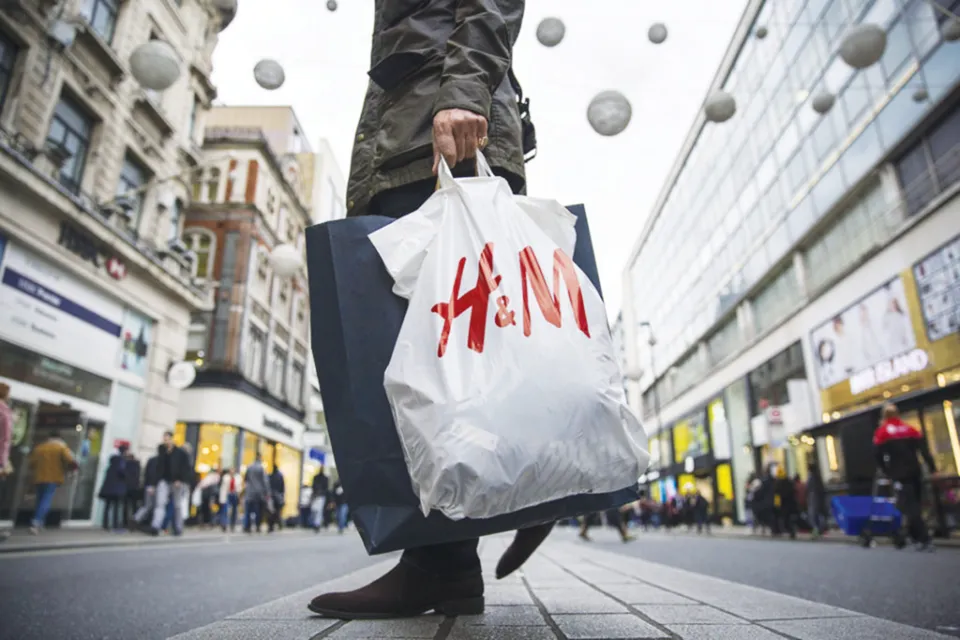Have you heard of fast fashion and wondered what is fast fashion exactly?
Fast fashion describes low-priced but stylish clothing that moves quickly from design to retail stores to meet trends, with new collections being introduced continuously.
Fashion fans used to be able to anticipate new releases once a season, but these days it seems like the current trends change every few weeks. Purchasing new items as soon as they become available is essential for anyone who wants to stay on trend or risk appearing outdated.
Discover the history of the fashion business and some of its key players.
What is Fast Fashion?
“Fast fashion” refers to mass-produced clothing that’s made quickly, cheaply, and in trending styles. No matter the quality or additional costs, fast fashion marketers want to get shoppers their hands on runway fashions as soon as possible.
Most of these trendy items are of poor quality and won’t withstand more than a few washings. Due to their initial low investment, the buyer is not adversely affected by this.

The clothing industry has been transformed by fast fashion. As opposed to being a semi-annual investment, it has made updating your wardrobe as unnecessary as ordering takeout.
The world is embracing the disposable clothing trend, but it didn’t happen overnight.
Related Post:
- Is ASOS Fast Fashion?
- Is Uniqlo Fast Fashion?
- Is Nasty Gal Fast Fashion?
- Is Dolls Kill Fast Fashion?
- Is Fashion Nova Fast Fashion?
- Is Urban Outfitters Fast Fashion?
How Fast Fashion Got Started?
Before the Industrial Revolution, people were primarily in charge of locating the materials needed to make their own clothing.
Inventions like the power loom and the sewing machine, which appeared in the 18th century, moved the production of clothing from the home to the factory, enabling production to be scaled up in unimaginable ways.
Even so, prices for clothing continued to be relatively high for centuries to come. In today’s dollars, dresses from the 1950s cost between $70 and $100.
By the 1960s, the average American spent more than 10% of their income on just two dozen pieces of clothing each year, all of which were made in the country.
As factories began to leave the United States, the 1970s heralded a significant change in the production of clothing. in favor of cheaper labor in Latin America and Asia.
The end result was mass-produced, cheap clothing, and consumers adjusted their purchasing patterns as a result. Americans spend less than 4% of their budget on clothes each year but bring home about new 70 pieces, one of which might be made domestically.
Fast fashion is not just about more affordable production. Supply chain management advancements made it possible to get popular items into customers’ hands more quickly, hastening the entire fashion cycle.
Designer labels used to release four collections a year, but many have since upped that number to 20+ distinct collections in the same amount of time.
Fast Fashion Pros and Cons
Pros
- Profitable for manufacturers and retailers
- Offers fast, efficient delivery
- Makes clothes affordable
- Democratizes style and fashion
Cons
- Uses cheap materials, poor workmanship
- Encourages “throwaway” consumer mentality
- Bad for the environment
- Associated with exploitative, abusive labor practices
Fast Fashion Leaders
Major players in the fast-fashion market include Shops like Zara, H&M Group, UNIQLO, GAP, Forever 21, Topshop, Esprit, Primark, Fashion Nova, and New Look are also included.
Despite frequently outsourcing the actual clothing production, many businesses serve as both manufacturers and retailers.
Here’s a closer look at some of the leaders in fast fashion.
Zara
Fast fashion is practically always associated with Spanish retail giant Zara, the flagship brand of global textile conglomerate Inditex. Zara is a prime example of how to reduce the time between design, production, and delivery.
Zara sells men’s, women’s, and children’s clothing. The company’s designers can create a sketch of a garment, and in as little as four weeks, the finished item will be displayed in stores. In as little as two weeks, it can modify already-existing items.
Its ownership of a relatively short supply chain is its secret to this quick turnover. In countries like Portugal, Turkey, and Morocco, more than half of its factories are located close to its corporate headquarters in A Coruña, Spain.
Another crucial Zara strategy—overstocking the shelves with merchandise so that customers have an unrivaled array of options—is made possible by its quick turnaround time. Compared to, it produces over 11,000 pieces annually. an industry average of 2,000 to 4,000 pieces.
Read More about Zara:
H&M
One of the first fast-fashion businesses was established in Sweden by the H&M Group, also known as Hennes & Mauritz, in 1947.
As of 2022, H&M Group operates in 74 countries with over 4,000 stores under its various brands, which, along with H&M, include the slightly more upscale COS and the youth-oriented Monki.

The H&M Group operates like a department store, offering items like cosmetics and home decor in addition to clothing for men, women, and children. It is more of a retailer because it doesn’t have any factories of its own and instead gets its clothing from 600 different independent suppliers.
However, 16 H&M production offices are in charge of managing these suppliers, and they use cutting-edge IT systems to track inventory and communicate with corporate HQ. Africa, Asia, and Europe are where the factories are located.
Is Fast Fashion Bad?
Many people argue whether the industry’s top players convincing us that we’re behind trends as soon as we see them being worn or the alarming desire for new looks came first.
It’s hard to say, but there is no doubt that we thirst for the “next best thing” every day of our consumer-driven lives.
However, given the accelerated rate of production and the dubious nature of the supply chains, compromises must be made. Brands are selling extremely low-quality goods and producing clothing in a hurried manner.
In the extreme rush to get clothing to the masses, there isn’t enough time for quality control or to ensure that a shirt has the proper number of buttons.
The fast-fashion manufacturing process leaves a lot to be desired, and pieces are often thrown away after no more than a few wears.
The same sense of urgency that ignores quality also keeps the price of these clothes incredibly low.
Impact of Fast Fashion on the Environment

There are several environmental impacts of fast fashion, including:
- Harm to animals: The production of fast fashion clothing releases dyes, hazardous chemicals, and microfibers into the waterways and ocean, which have an impact on the food chain by being consumed by marine life.
- Land degradation: Cotton grown for commercial purposes requires substantial resources. The soil is deteriorated by synthetic fertilizer, and it uses a lot of water.
- Greenhouse gas emissions: The carbon footprint of the fashion industry is substantial. The lengthy supply chain of manufacturing and shipping necessary to produce a garment results in a contribution of 10% to global carbon emissions.
- Toxic chemical pollution: Because they are made of synthetic materials, the low-quality textiles that fast fashion companies use don’t biodegrade and contaminate landfills with lead, pesticides, and other harmful chemicals. 5% of all landfill space is occupied by the textile industry.
- Water pollution: The use of chemicals to dye textiles contaminates both human and animal-used waterways. The fashion sector is responsible for 20% of the wastewater produced, according to the United Nations Commission for Europe. The denim industry ranks as the second-largest global polluter of fresh water, causing harm to the local environment’s ecology and preventing sustainability. Microfibers shed by polyester end up in the water supply and add to the plastic pollution in the ocean.
Conclusion: What is Fast Fashion
In short, fast fashion is the term used to describe clothing designs that move quickly from the catwalk to stores to take advantage of trends.
The world of fast fashion has run unchecked for far too long, and the planet is facing the consequences. It’s time to revamp your personal wardrobe strategy in an effort to have a bigger personal impact.
Hold on to what you already have as long as you can and buy less, wiser purchases. Making slow fashion popular is a tried-and-true way to counter fast fashion and lessen the blow to the global apparel industry.
FAQs About Fast Fashion
Why is Fast Fashion Bad?
Fast fashion has a significant negative impact on the environment during both its production and end-of-life.
When Did Fast Fashion Start?
The term, “fast fashion” was first used at the beginning of the 1990s, when Opening in New York was Zara.
Is H&M Fast Fashion?
With more than 5,000 stores worldwide, H&M is one of the many fast fashion companies known for copying high-end fashion and rapid clothing turnover.




